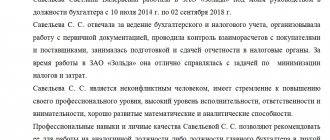Last modified: March 2020
Returning low-quality products to the store is a difficult process, since sellers do not want to lose their profits and refuse to accept the goods back. However, according to the law, the consumer has the right to return a defective product or exchange it for a similar one. In order to achieve satisfaction of your requirements, you must submit a letter of claim to the seller.
In the article we will look at in what cases a claim is written, how to draw it up correctly, what the buyer has the right to demand from the seller, and how to send a claim to the store.
In what cases is a claim for the return of a defective product made?
When purchasing a product, you should carefully inspect it for defects. The buyer has the right to file a claim against the seller if he establishes that:
- products do not comply with the requirements of GOST, TU, and other regulatory documents;
- the product cannot be used for its intended purpose due to a manufacturing defect or physical damage caused by the seller until the goods are transferred to the client;
- the product does not correspond to the characteristics and description given by the seller;
- signs of poor quality are noticeable visually;
- the store did not provide quality and safety certificates or documentation from the manufacturer;
- at the time of sale, the products expired;
- There is no legally required marking on the product.
It happens that defects are revealed some time after purchase during the process of using the product. Therefore, you should remember the deadlines for contacting the seller to return a defective product. Thus, for non-food products a warranty period of two years is determined. Products have an expiration date.
Important! For technically complex goods, the 15 day rule applies. For minor defects, you need to contact the store within two weeks. Outside this period, only claims for significant deficiencies are subject to satisfaction.
https://youtu.be/HQ8QZyTch_w
Making a claim
A claim that will be aimed at resolving a conflict situation must contain several points:
- Basic information. This item includes the full name, surname and patronymic of the person who draws up the claim letter. In addition, if a claim is submitted by a company, it is also worth entering the name of the company, which was previously indicated in the contract, the clauses of which were violated.
- Recipient. Before you start writing a claim to any store or other commercial establishment, you need to find out the name, surname and patronymic of the person who should receive it. In addition, you may need to know the full legal name.
- Address. In this paragraph you should indicate the full address of the recipient.
- Description. At this point, it is required to describe the essence of the conflict in as much detail as possible, without losing sight of the chronology of what happened. And it doesn’t matter at all whether the dispute is between individuals or legal entities.
- Violations. This paragraph describes a single or multiple oversights on the part of one of the parties to the contract, noticed by the other party.
- Consequences. This paragraph requires a description of the possible unfavorable outcome that awaits someone who has performed their duties in bad faith if this letter is ignored.
- Requirements. In this paragraph, the person submitting the letter of claim must indicate all his requirements regarding the resolution of the conflict situation and the legal violation of the partner.
- Law. This paragraph requires you to identify the relevant laws that the recipient has already violated or continues to violate. They should be enclosed in quotation marks.
- It is required to complete the claim letter by putting your own signature on it and the date it was written.
complaints about services provided
This version of the claim letter is popular for resolving conflicts, both between individuals and between legally obligated parties. After the above points have been correctly drawn up and filled out, you need to send a sample claim to the store or any other organization that does not fulfill the terms of the contract.
It is important that the document bears the signature of the other party, and not the signature of the lawyer who drafted the claim letter. However, there may be cases when a company lawyer is empowered to put his own signature, which will be equal to the signature of an authorized person of the company.
The letter of claim is written either by hand, using a sheet of A4 paper, or printed, since the current legislation does not have clauses or clauses regarding its writing. In addition, citizens should remember that if it comes to refusing to return money for any product that is subject to exchange and return, they should also file a legal claim.
How to properly file a claim for a defective product?
To return or replace defective products, the customer must contact the store with a written complaint. Let's consider a step-by-step algorithm for drawing up an application to the seller.
Step 1 – Filling in information about the seller and buyer
In current practice, it is customary to begin drawing up an application by filling out information about the seller and buyer. In the upper right corner of an A4 sheet, the citizen writes the name of the store with the legal address and contact phone number. If you know the official authorized to consider customer requests, you must indicate his position and full name.
Then the citizen indicates his full name, actual residential address and contact phone number for communication. If he wants to receive a response to the request electronically, he can indicate his email.
Step 2 – Description of the reasons for returning the product
The name of the document “claim” or “application” must be written, which is located under the “header” in the middle of the sheet. The following is a detailed description of the circumstances of the purchase and the identified deficiencies.
The client provides the following information:
- date of transaction;
- details of the agreement, if it was concluded in writing;
- detailed description of the product (name, trademark, technical characteristics, other information that allows you to individualize the product);
- when the deficiencies were discovered;
- list of identified defects.
Important! It is necessary to emphasize that the defects arose before the goods were transferred to the client. As evidence of the guilt of the manufacturer or store, you can refer to the results of an examination conducted at the initiative of the buyer.
Step 3 – Formulation of a specific requirement for the seller
The appeal ends with a specific requirement that the store must fulfill.
Example: “I ask you to replace the low-quality product with a similar one of the same model” or “I ask you to terminate the sales contract and return the money for low-quality products.”
Also in this section of the application you should determine a specific deadline for the seller to consider the application.
We must remember! In accordance with Article 21 of the Law on the Protection of Consumer Rights, replacement of products with defects must be made within seven days from the moment the customer contacts the seller. In cases where additional verification is required, this period increases to 20 days. When carrying out warranty repairs, it should not exceed 45 days. Requests for refunds are processed within 10 days.
At the end of the document there is a list of appendices. For example, a purchase and sale agreement, a payment receipt, and a warranty card are indicated. The listed documentation must be attached to the application as evidence.
Preparing a statement of claim to court
Certain requirements also apply to the document.
The claim must include the following information:
- name of the authority to which the appeal is sent;
- information about the plaintiff and defendant with contact details;
- features of the current situation;
- the requirements put forward and the cost of the statement of claim;
- information about an attempt to resolve the dispute;
- list of attached documentation;
- date of document preparation.
When deciding to initiate legal proceedings, it is necessary to find out enough information about the defendant. In another situation, establishing his identity may be problematic, and the court will not be able to uphold the applicant’s rights.
Video
https://youtu.be/Fx_WJ9EzMfs
What does the buyer have the right to demand from the seller?
Article 18 of the Consumer Protection Law lists the rights that the customer can exercise at his own discretion. If defects are detected in a product, a citizen has the right to demand:
- exchanging a product for another of the same brand or a different model with recalculation of the cost;
- proportional reduction of the original price, taking into account the significance of the defect and its impact on the consumer properties of the product;
- elimination of the defect at the expense of the store;
- payment of expenses incurred in connection with repairs carried out by a third party;
- termination of the contract and return of money for low-quality goods.
Additionally, the client can ask the seller to compensate for moral damage caused by the sale of a low-quality product (Article 15 of the Law on the Protection of Consumer Rights).
Consequences
The person to whom the claim was sent is obliged to respond to it in one way or another. This must be done even if the dispute or conflict is soon resolved and an agreement has been reached with the submitting party. If there is no response, the person filing the claim may regard this as an unwillingness to resolve the conflict situation and apply to the courts with a request for settlement. Once the response period has expired, the applicant can file a claim in court.
When responding to a claim, it is important to confirm that it was accepted and taken into account, setting the date of acceptance and describing the decision regarding this controversial situation. In addition, the response letter must indicate the exact time frame for resolving the conflict (for example, the period within which an exchange or refund will be made for poor-quality products; refund of funds for poor-quality services). In addition, it is recommended to attach to the response letter a document that confirms the violation of the terms of the contract.
https://youtu.be/Rmwddgk_FJU
How to submit a complaint to the store?
A claim for defective products is handed over to a store employee authorized to receive requests from customers. The buyer needs to ensure that his copy of the document has an incoming stamp with the date of registration and the signature of the responsible employee.
It happens that a citizen does not have the opportunity to visit the store in person. In this case, he has the right to use one of the following options:
- entrust the filing of a claim to a representative using a notarized power of attorney;
- send documents via Russian Post or courier service by issuing a registered letter with notification;
- write to the seller via the feedback form on the website.
It is important that when sending a letter of claim using any of the above methods, it is received by the store. Proof of receipt should be retained, since in the future it may be necessary to file a complaint with Rospotrebnadzor or a statement of claim in court.
What is a letter of claim and why is it needed?
A letter of claim is a written appeal from a person to his counterparty, containing a demand to eliminate the violation of his subjective rights.
The claim, as it were, “warns” that the next step may be to go to court or another authority. Many civil law contracts, especially long-term ones, such as deliveries, contain a provision that the party must file a claim before going to court. But even if there is no such condition, it is more advisable to first write a letter of claim and try to resolve everything peacefully, rather than spending huge resources on legal proceedings.
What should be contained in the claim and how to file it?
The claim letter must include:
- Full name of the sender, or name of the organization, return address for communication and telephone number;
- Full name of the recipient of the claim with the shipping address. If the letter is sent to an organization, then its head must be indicated;
- The circumstances of the case under which the violation occurred, as well as what exactly this violation was expressed in;
- A reference to the rules of law that the counterparty violated;
- A specific requirement to eliminate the violation, as well as a deadline for its implementation;
- Adverse consequences for the violator that will occur if the requirement is not fulfilled;
- Signature, seal, date;
The claim is written by hand, but it is best to print it. There are no strict rules for its formatting, but you need to remember that the letter must be written in an official business style, extremely clear and understandable for the counterparty. Ambiguous phrases and slang words should be avoided.










